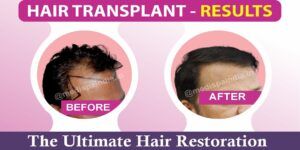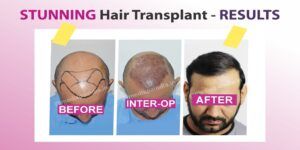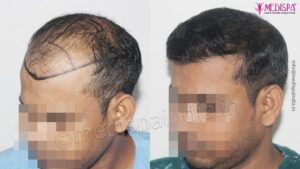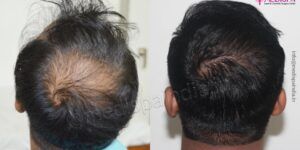
Experiencing hair loss can be a source of significant distress for individuals of all genders. The importance of hair is particularly acknowledged among women, who often aspire to possess long, lustrous locks that can be styled in diverse ways to enhance their beauty. However, those women facing hair loss may find their self-esteem diminished and their overall quality of life adversely affected. Therefore, it is essential to seek a lasting solution to effectively tackle this concern.
The options available for addressing hair loss are somewhat limited, encompassing medications, PRP therapy, and hair transplants. While medications may provide some benefit for women experiencing hair loss, the effects are often temporary. Ceasing the use of these medications can result in a further decline in hair condition. For those in the early stages of hair loss, PRP therapy is often recommended. This treatment can yield positive results, but it is vital to choose and implement the correct treatment strategy with care.
When all other treatment avenues have been explored, hair transplantation emerges as the most appropriate option. This method offers a permanent resolution to hair loss, promoting the growth of healthy hair and achieving results that appear natural.
Options to treat female pattern baldness
Many women attempt to address their hair loss through homemade remedies or cosmetic products, as they often do not recognize the condition as a significant issue. Unfortunately, irreversible hair loss tends to persist and may worsen over time.
Initially, women may seek temporary solutions such as wigs and synthetic hair; however, these options can be challenging to maintain and require frequent replacement. High-quality alternatives that appear natural can also be quite expensive.
Research indicates that medications like minoxidil and finasteride may provide benefits for women experiencing hair loss. These treatments can promote hair growth and slow the progression of hair loss. Nevertheless, finasteride is not recommended for women of childbearing age, and the results may only be temporary.
Reports suggest that hair transplantation is a highly safe and effective method for permanently addressing hair loss. The outcome of the procedure largely depends on the expertise and skill of the surgeon, making it essential to choose wisely.
Dr. Suneet Soni, the director of Medispa Hair Transplant Clinic, is a leading expert in female hair transplantation, having conducted over 10,000 procedures. He is internationally recognized for his outstanding experience and proficiency in this field. Many Bollywood celebrities refer to him as a “master of artistic skills” due to his exceptional ability to design natural-looking hairlines.
When to go to a doctor
Women generally exhibit greater self-awareness and are more inclined to actively pursue medical help for hair loss than men, who frequently disregard the initial symptoms. Although temporary hair loss may happen, seeking medical advice promptly can lead to a range of treatment possibilities. In the first consultation, the physician will identify the root cause of the hair loss and suggest the most appropriate treatment strategy. The determination of eligibility for medications or interventions such as hair transplants will be based on an assessment of the severity and cause of the hair loss.
Is hair transplant in females possible?
It has been traditionally believed that hair transplants are predominantly effective for men; however, it is now recognized that women can also reap the benefits of this procedure. Historically, men have been more likely to pursue hair transplants, largely due to a lack of accessible information. In the current digital era, various online platforms offer extensive resources for individuals of all genders.
We have noted a growing trend of women approaching us for assistance with hair loss issues, and they have experienced significant improvements and complete solutions to their concerns. If you are feeling uncertain and require trustworthy guidance or information regarding hair transplants for women, we invite you to consult Medispa hair transplant clinic, the foremost facility in India specializing in this area.
Hair transplant in females
A hair transplant is a procedure that involves the extraction of hair grafts from a designated donor site, which are then relocated to areas of the scalp that are bald. The effectiveness of hair transplant procedures is contingent upon their precision and a high level of sensitivity.
While there are distinctions between male and female hair transplant, the core techniques remain consistent. The following outlines the hair transplant methods:
- FUT (Follicular Unit Transplantation, commonly referred to as the strip method): This technique entails the removal of a strip of tissue from the donor area, which is subsequently divided into individual hair grafts. These grafts are then implanted into the targeted bald regions. Each step of this process is performed under high magnification to ensure the longevity and optimal coverage of the hair grafts.
- FUE (Follicular Unit Extraction): This method utilizes small, punch-like instruments to extract individual follicular units, which are then transplanted to the recipient site. The extraction of hair transplants from the scalp must be executed with great precision and under high magnification to maintain their integrity.
Women often opt for no-shave hair transplants, which introduces additional complexity to the procedure. In this case, micro slits are created at the recipient site to facilitate the transplantation of hair follicles without shaving the existing hair. Care is taken to protect the existing hairs during this process, resulting in a higher hair transplant cost in India for women compared to men.
Principle of hair transplant
The hair transplantation procedure involves locating DHT-resistant or permanent hair follicles from regions such as the back and sides of the head, as well as the chest, armpits, and beard. These follicles are carefully harvested and transplanted with great accuracy to maintain their genetic characteristics. As a result, the hair that is transplanted retains the attributes of its original follicle, rather than those of the scalp, ensuring enduring results.
Recovery following hair transplant
The recovery period following a hair transplant typically spans approximately 7 to 10 days. It is essential to follow the guidelines provided by your physician during this time to ensure a safe and successful outcome. Experiencing temporary side effects such as swelling, discomfort, or itching is common; however, these symptoms generally subside within a few days. After the healing process is complete, you can easily resume your normal activities without the need for additional care, as the transplant requires no further maintenance.







